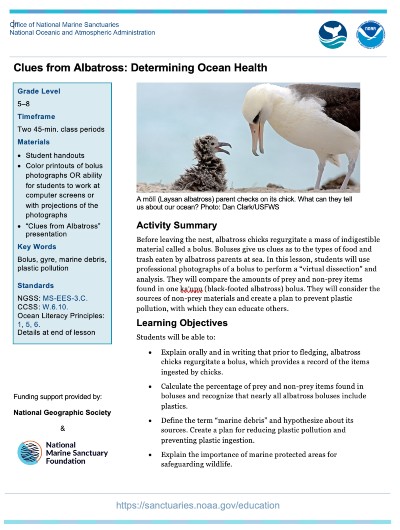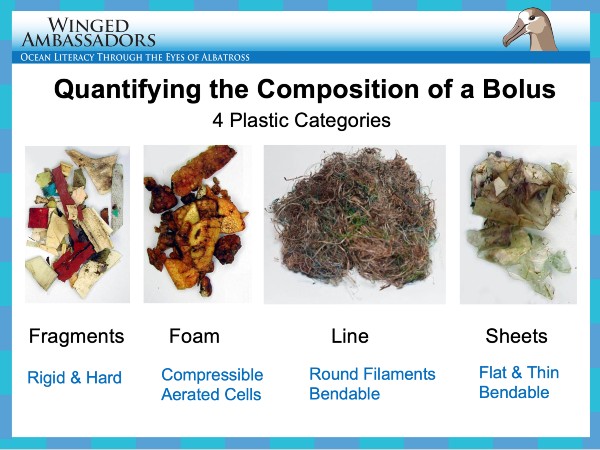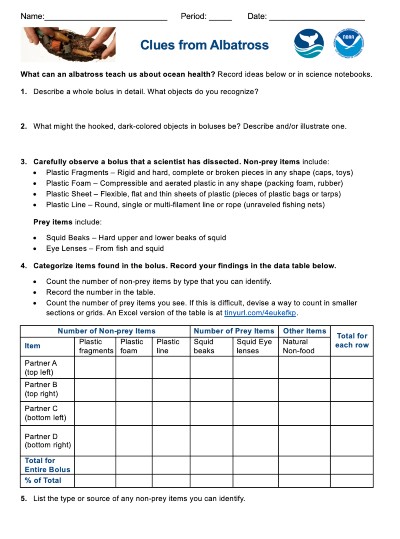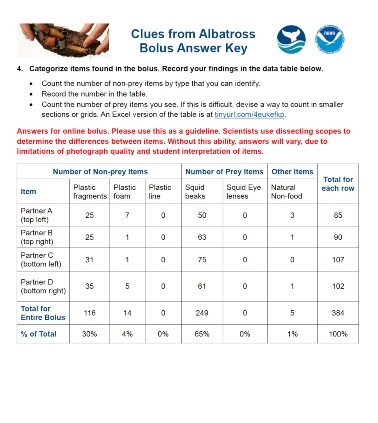Exploring Ocean Mysteries is a curriculum that makes it easy to teach the seven Ocean Literacy Principles while meeting NGSS, Common Core and Climate Literacy standards. Lessons are targeted to middle grades and adaptable for grades 4-12. They use the National Marine Sanctuary System as an engaging backdrop that helps students understand their importance for exploration, research, Indigenous cultures and more.
Ocean Literacy Essential Principle 6: The ocean and humans are inextricably interconnected.
Before leaving the nest, albatross chicks regurgitate a mass of indigestible material called a bolus. Boluses give us clues as to the types of food and trash eaten by albatross parents at sea. In this Clues from Albatross: Determining Ocean Health lesson, students will use professional photographs of a bolus to perform a “virtual dissection” and analysis.
Lesson Plan
Students will:
- Explain orally and in writing that prior to fledging, albatross chicks regurgitate a bolus, which provides a record of the items ingested by chicks.
- Calculate the percentage of prey and non-prey items found in boluses and recognize that nearly all albatross boluses include plastics.
- Define the term “marine debris” and hypothesize about its sources. Create a plan for reducing plastic pollution and preventing plastic ingestion.
- Explain the importance of marine protected areas for safeguarding wildlife.





